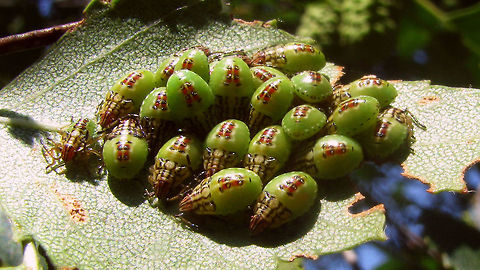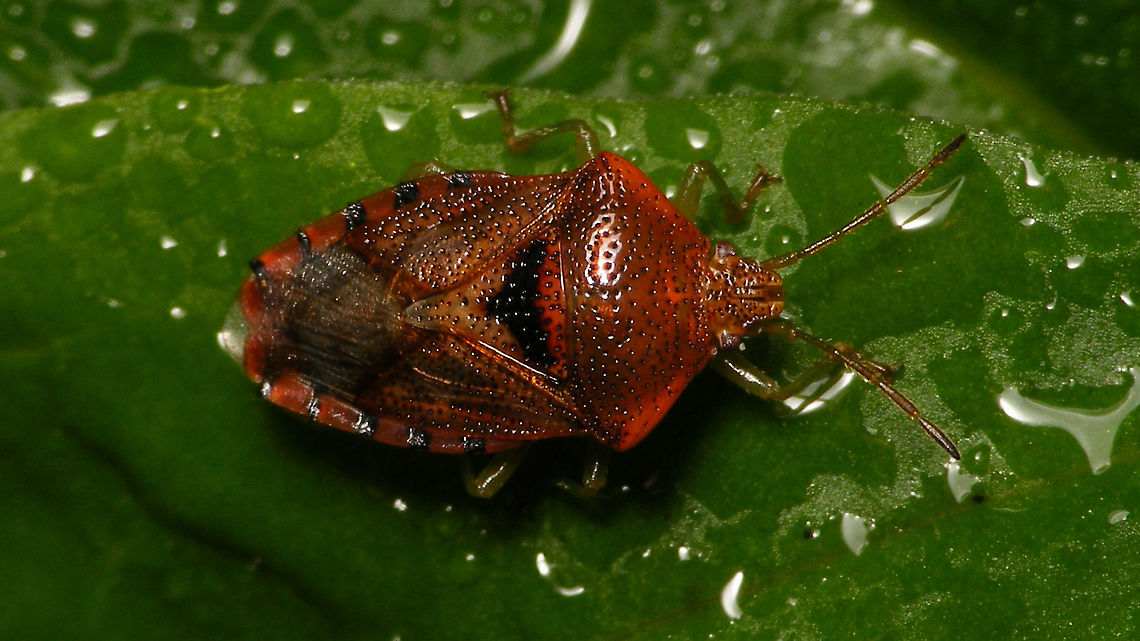
The parent bug is a shield bug, a type of insect characterized by its shield-shaped body. It is so named because adults remain with their offspring for several weeks after they hatch; this is relatively rare behaviour in the insect world. Adults are approximately 12 mm long.
Similar species: True Bugs


comments (3)
Nice spotting! :-) Posted 7 years ago
Same goes for the "southern" green stinkbug Nezara viridula:
But not only bugs do this. In Lacewings it is quite unusual for the adults to overwinter (mostly they sit through the cold as a pupa in cocoon), but in the few species that do (in Europe Chrysoperla spp and Peyerimhoffina) some will also change colours. In fact this is one of the things that makes a few Chrysoperla carnea s.l. actually identifiable to species as some (from "evergreen" areas in Europe) do not change colours, some change to a dark reddish brown and some to a more yellowish brown like this one:
Posted 7 years ago